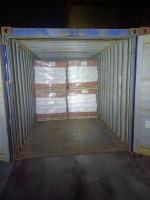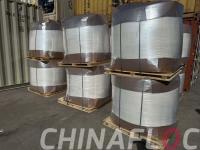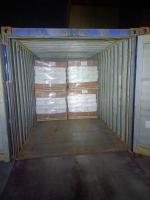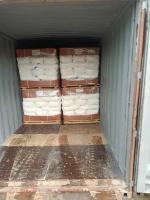Our Products
Polyacrylamide / Anionic polyacrylamide emulsion of CYFLOC HX-600 can be repalced by Chinafloc EM

Anionic polyacrylamide emulsion of CYFLOC HX-600 can be repalced by Chinafloc EM
CYFLOC HX-600 is an emulsion based on product for use in alumina plant to settle mud in red mud clarifier or CCD mud washing circuits .it contains hydroxamate functional groups that provide high setting rates and significantly reduced suspended soild in overflows.
Anionic polyacrylamide (APAM) emulsions are water-soluble polymers widely used in various industries, including mining, wastewater treatment, and specifically, alumina refining. In alumina plants, these polymers play a crucial role in the management of red mud—a byproduct of the Bayer process used to extract alumina from bauxite ore. This paper explores the function of APAM emulsion in the red mud setting process, its benefits, mechanisms of action, and its environmental impact.
Understanding Red Mud
Red mud is a highly alkaline waste material produced during the alumina extraction process. Composed primarily of iron oxide, aluminum oxide, silica, and other trace minerals, red mud poses significant environmental challenges due to its high alkalinity (pH 10-13) and its volume, which can be several times that of the bauxite ore processed. Proper handling and disposal of red mud are critical to minimize environmental impacts and to maximize recovery of valuable materials.
Role of Anionic Polyacrylamide Emulsion
Anionic polyacrylamide emulsions serve several key functions in the setting and management of red mud:
-
Flocculation and Settling Enhancement: One of the primary roles of APAM in red mud processing is to act as a flocculant. When added to red mud slurry, APAM promotes the agglomeration of fine particles. This is crucial because red mud contains a large volume of fine particles that can remain suspended in water, leading to prolonged settling times. By neutralizing the charges on the particles, APAM facilitates their collision and bonding, forming larger flocs that settle more rapidly. This not only speeds up the settling process but also reduces the volume of water that remains in the tailings.
-
Improved Solid-Liquid Separation: The effective separation of solids and liquids is essential for efficient red mud management. The addition of APAM enhances the solid-liquid separation process by increasing the rate at which solids settle in thickeners or clarifiers. This improved separation leads to a clearer effluent, which can be further treated or discharged, reducing the risk of environmental contamination.
-
Reduction of Mud Volume: APAM emulsion aids in the densification of red mud. By enhancing the flocculation process, the volume of red mud can be significantly reduced, allowing for more efficient storage and management. This reduction in volume is particularly beneficial in minimizing the footprint of red mud disposal sites.
-
Water Recovery: Enhanced flocculation and settling lead to increased water recovery from the red mud slurry. The clear water recovered can be recycled back into the process, promoting sustainability and reducing the overall water consumption of the alumina plant. This is particularly important in regions where water is a limited resource.
-
pH Neutralization: Although APAM itself is not a pH neutralizer, its application in conjunction with other agents can help manage the alkalinity of red mud. For instance, when combined with neutralizing agents, APAM can aid in controlling the pH of the slurry, which is essential for meeting environmental regulations and preventing harm to aquatic ecosystems in nearby water bodies.
Mechanism of Action
The mechanism through which APAM emulsions function involves several physical and chemical interactions:
-
Charge Neutralization: Red mud particles typically carry a negative charge due to their mineral composition. The anionic nature of APAM allows it to interact with these negatively charged particles, neutralizing their charge and promoting aggregation.
-
Bridging Effect: APAM molecules are long-chain polymers, and their structure allows them to span between multiple particles, effectively "bridging" them together. This bridging mechanism increases the size of the flocs formed, which promotes quicker settling.
-
Viscosity Modulation: The introduction of APAM alters the viscosity of the slurry. This modulation can enhance the flow characteristics of the slurry in the processing equipment, ensuring more efficient handling and treatment.
Benefits of Using Anionic Polyacrylamide Emulsion
-
Operational Efficiency: The use of APAM in alumina plants can significantly enhance operational efficiency by reducing settling times and increasing the throughput of processing equipment. This results in lower operational costs and improved productivity.
-
Environmental Compliance: With increasing regulatory pressures regarding waste management, the use of APAM helps alumina plants comply with environmental standards by ensuring proper handling and disposal of red mud. Effective management of red mud reduces the risk of leachate and contamination of surrounding land and water bodies.
-
Sustainability: By enhancing water recovery and reducing the volume of waste generated, APAM supports sustainable practices within alumina production. The recycling of water and the reduction of waste volume contribute to the overall sustainability of the operation.
-
Cost-Effectiveness: While there is an initial cost associated with the procurement of APAM, the long-term savings achieved through improved efficiencies and reduced waste management costs can outweigh these expenses. The overall cost-effectiveness of using APAM makes it an attractive option for alumina producers.
Challenges and Considerations
Despite its numerous advantages, the use of anionic polyacrylamide emulsion is not without challenges:
-
Temperature Sensitivity: APAM's performance can be affected by temperature fluctuations. Higher temperatures may degrade the polymer, reducing its effectiveness as a flocculant. Careful monitoring and management of process temperatures are essential.
-
Compatibility with Other Chemicals: The presence of other chemicals used in the alumina extraction process may influence the effectiveness of APAM. It is essential to conduct compatibility tests to ensure that APAM functions optimally alongside other agents.
-
Environmental Concerns: While APAM is generally considered safe, its long-term environmental impact should be evaluated, especially concerning potential accumulation in aquatic systems. Comprehensive environmental assessments can help mitigate any risks associated with its use.





